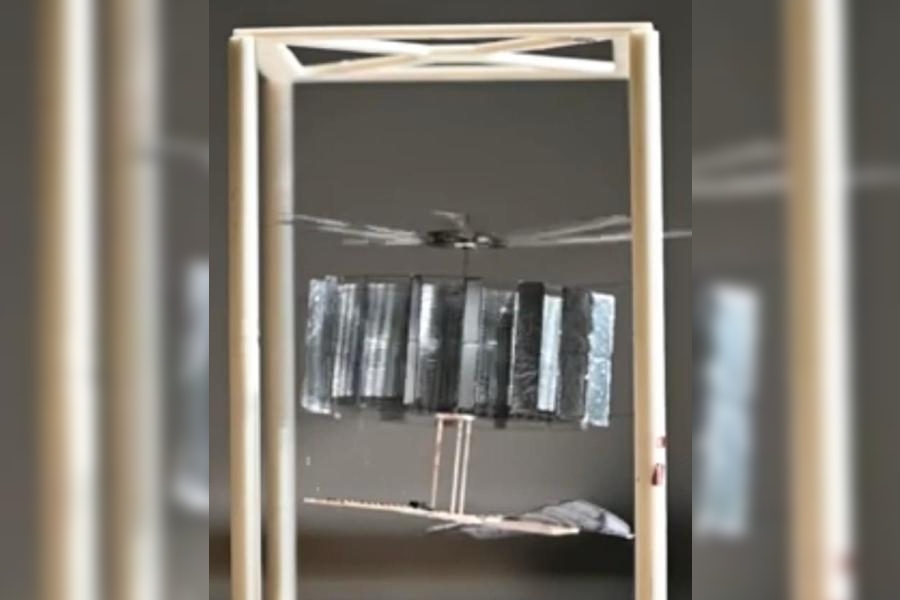Chinese scientists have developed what they have described as the world’s lightest and smallest sunlight-powered robotic flying vehicle which in lab tests has flown for up to an hour, an advance towards long-duration reconnaissance with micro-aerial vehicles (MAVs)..
Their rotorcraft, named CoulombFly, is a key step towards increasing the endurance of MAVs which are currently limited by their flight duration.
Traditional MAVs that are powered by electric motors driven by lightweight, rechargeable batteries and that weigh less than 10gm, for instance, can fly no longer than 10 minutes.
Now, Mingjing Qi, an associate professor at Beihang University, Beijing, and his colleagues have designed a solar-powered MAV that weighs 4.2gm — less than an A4 sheet of paper — capable of untethered flight for up to an hour in natural sunlight conditions.
They have described their ultralight MAV in a paper published in the research journal Nature on Wednesday.
The device combines an electrostatic propulsion system consisting of a motor and a 10cm propeller with a high-voltage power converter and solar cells.
Aerial reconnaissance with MAVs has myriad civilian and defence applications. They could be used to monitor crops or crowds, guide search-and-rescue operations, inspect infrastructure such as bridges, pipelines or wind turbines, or help patrol borders or track enemy movements.
“However, existing MAVs suffer from short endurance,” the Chinese researchers wrote in their paper. A commercial 7gm flying vehicle has a flight time of only 7 minutes while a 3.1gm vehicle can fly only three minutes. The smallest existing solar- powered quadcopter is about 2m in size and weighs 2.6kg, the researchers said, whereas CoulombFly is a tenth of that size and one-six hundredth of that mass.
“Our system can substantially increase the endurance of MAVs, thus expanding their potential applications in the future such as long-distance and long-duration aerial
reconnaissance,” the researchers said.











